My wife bought me a Zero Image 2000 for Christmas in 2008. I was delighted because I had been wanting to try pinhole photography for some time ever since I had come across other photographers’ works of pinhole photography. I anticipated finding new ways of image making with a pinhole camera.
Zero Image 2000 is a 6×6 medium format pinhole camera that has been manufactured by Zero Image in Hong Kong since 1999. It is a beautifully crafted wooden box with a tiny pinhole. It has a film winder, a film counter window, a spirit level (extra accessory) and a mechanism with which you manually uncover and re-cover the pinhole, that is, shutter control. This pinhole camera is a 25mm focal length (approx 14mm, 35mm equivalent), hence, it provides a super wide angle. According to the manufacturer’s manual, the aperture is f/138. This means the depth of field is enormous. However, due to diffraction, the image is quite soft. However a soft dream-like image is one of its characteristics.
It took me a while to get used to the fact that the pinhole camera has no viewfinder. This means you don’t see exactly how your intended image is going to be framed, especially around the edge of the frame. You are simply guessing at the time of exposure. To overcome this, I cut a square hole (6×6cm) on a rigid plastic sheet and use it as a tool for composition. I hold it together with the camera. It is rudimentary but it helps to achieve more controlled results.
For pinhole photography, I always carry a tripod, a light meter and two ND (neutral-density) filters: a 2 stops and a 3 stops. I use these ND filters, either one on its own or two together, when I want to exaggerate the movement of clouds, the flow of water or if the ambient light level is too high. During exposures I hold them in front of the pinhole as close and parallel to the camera as possible.
The fastest shutter speed I ever tried is ½ second. I don’t think any faster shutter speed is achievable, although someone might challenge this.
In my early attempts at pinhole photography, I wasted a fair number of frames. The most frequent mistake was forgetting to wind the film after exposure to the next frame. This resulted in unintended double exposure images. Unfortunately, nothing was worth saving of these.
In order to avoid these unwanted double exposures, I religiously started making note of exposure details, subjects and frame numbers. This way I know which frame number is the next. I have also developed the habit of advancing the film immediately after the exposure. As a result, the waste rate has almost been eliminated.
The images shown below were made over a long period of time because the pinhole camera is not one I carry around with me all times. It is very portable and light but the process of using it and the necessity of a tripod (or its equivalent support) is cumbersome. I used a roll of Fujicolor Acros 100 to produce these images.
I prefer to use Fujicolor Acros 100 for pinhole photography as it does not suffer from reciprocity failure up to 2 minutes, thereafter, up to 17 minutes you need a half stop compensation.
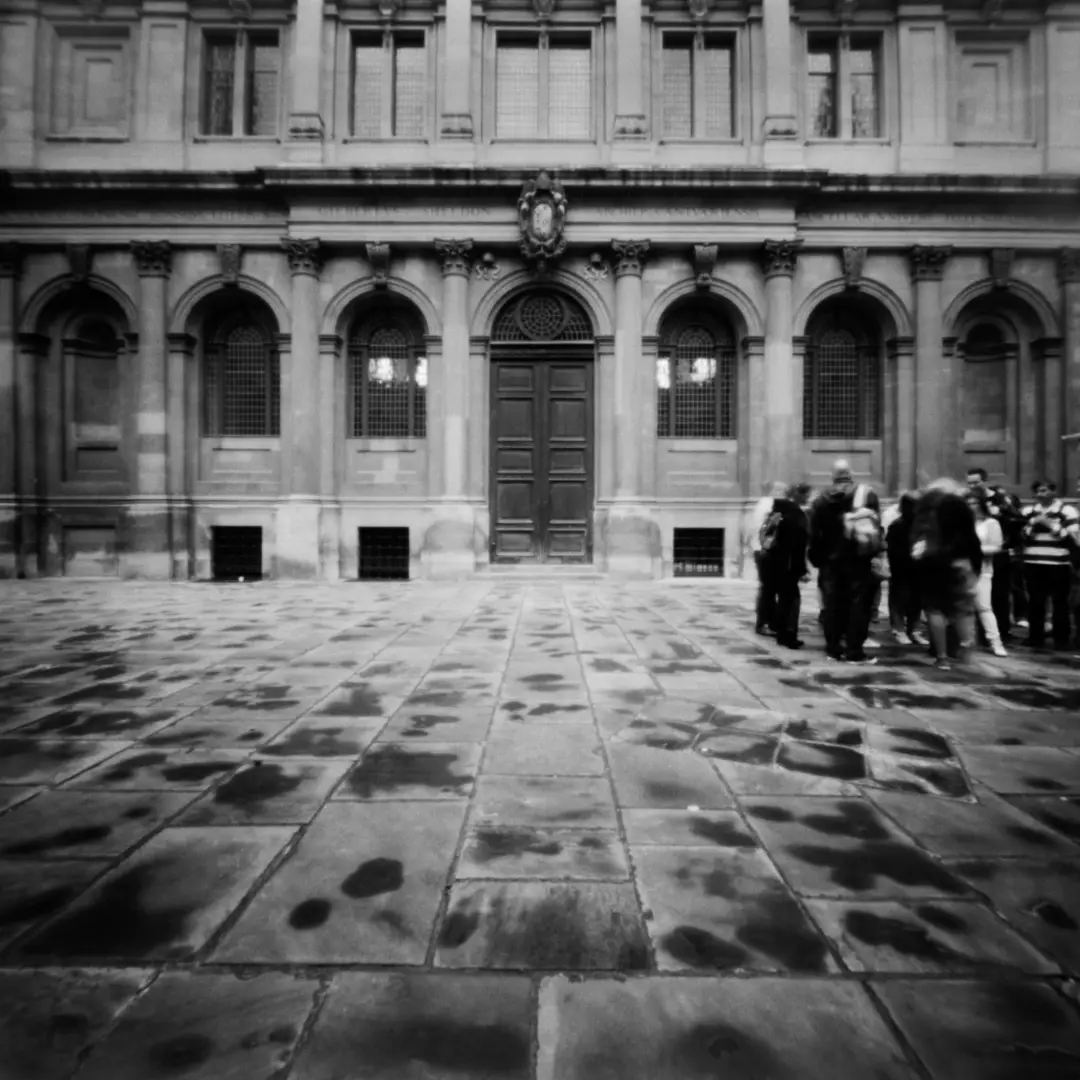
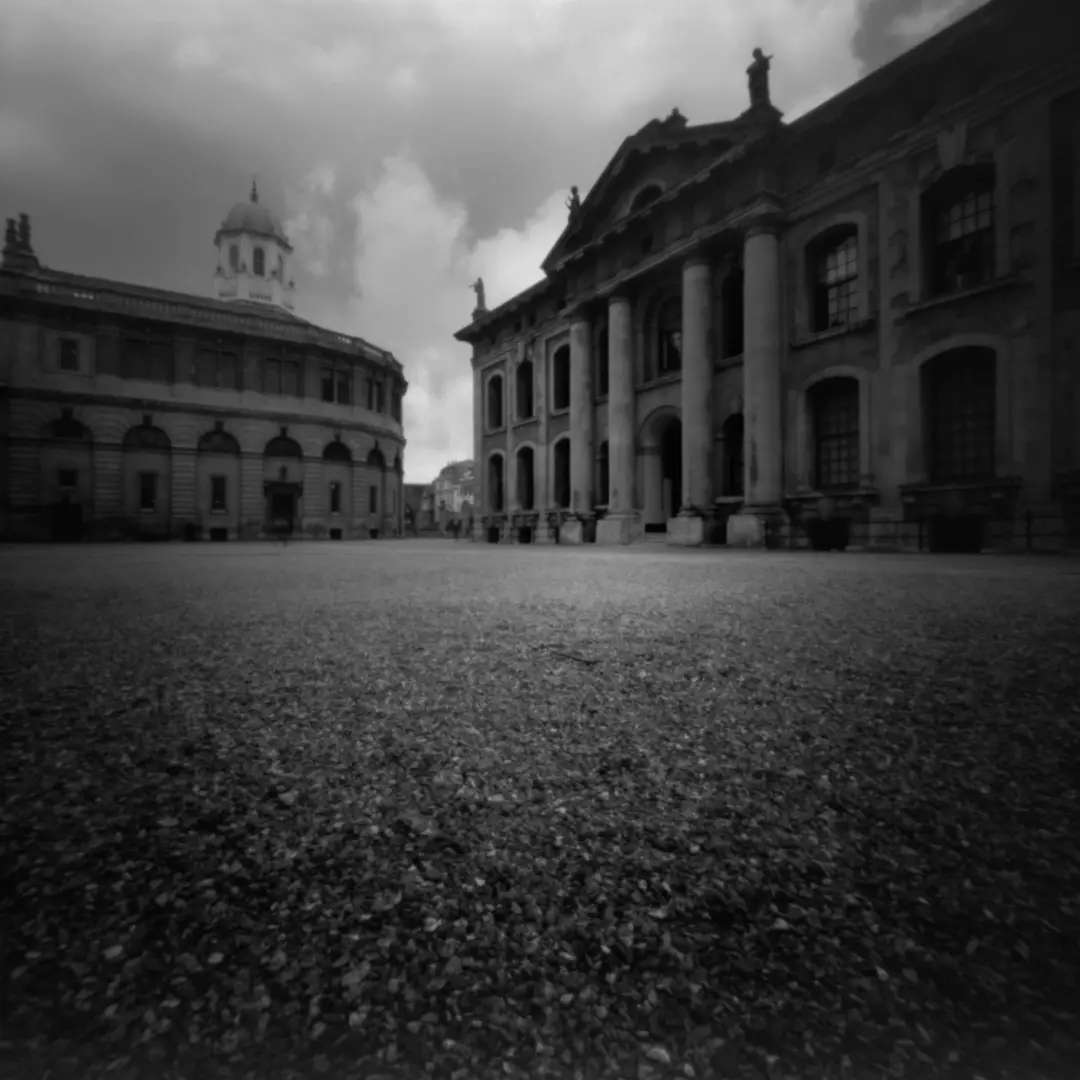
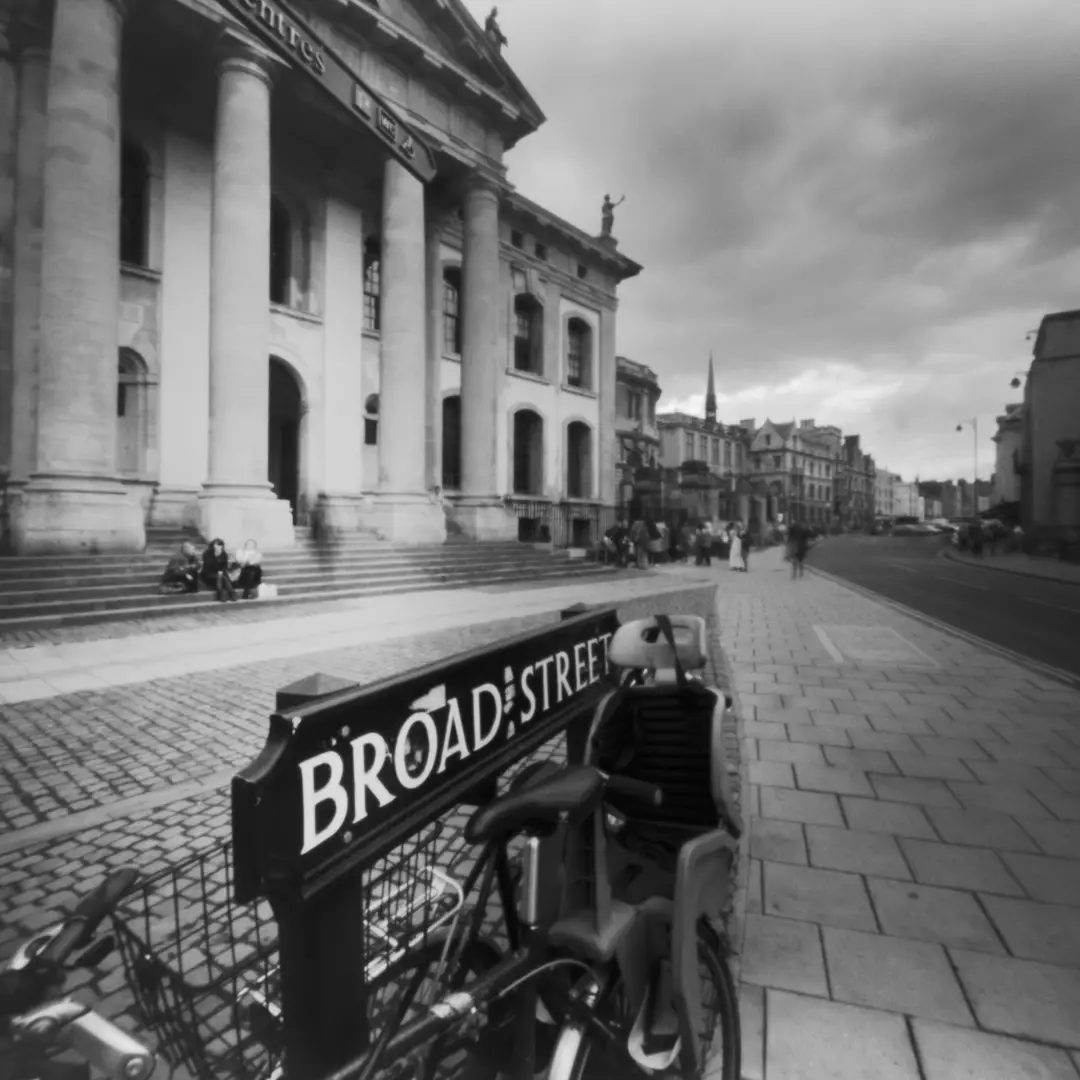
It goes without saying that the city of Oxford is a haven for photographers, especially for those who specialise in architectural photography. Unfortunately, on this occasion, I was unable to spend more than 4 hours there and managed to take only the 3 images seen above. When I was framing the 1st image, I had the dilemma of whether or not to include the group of people, but in the end I decided to include them as it would provide a nice focal point.
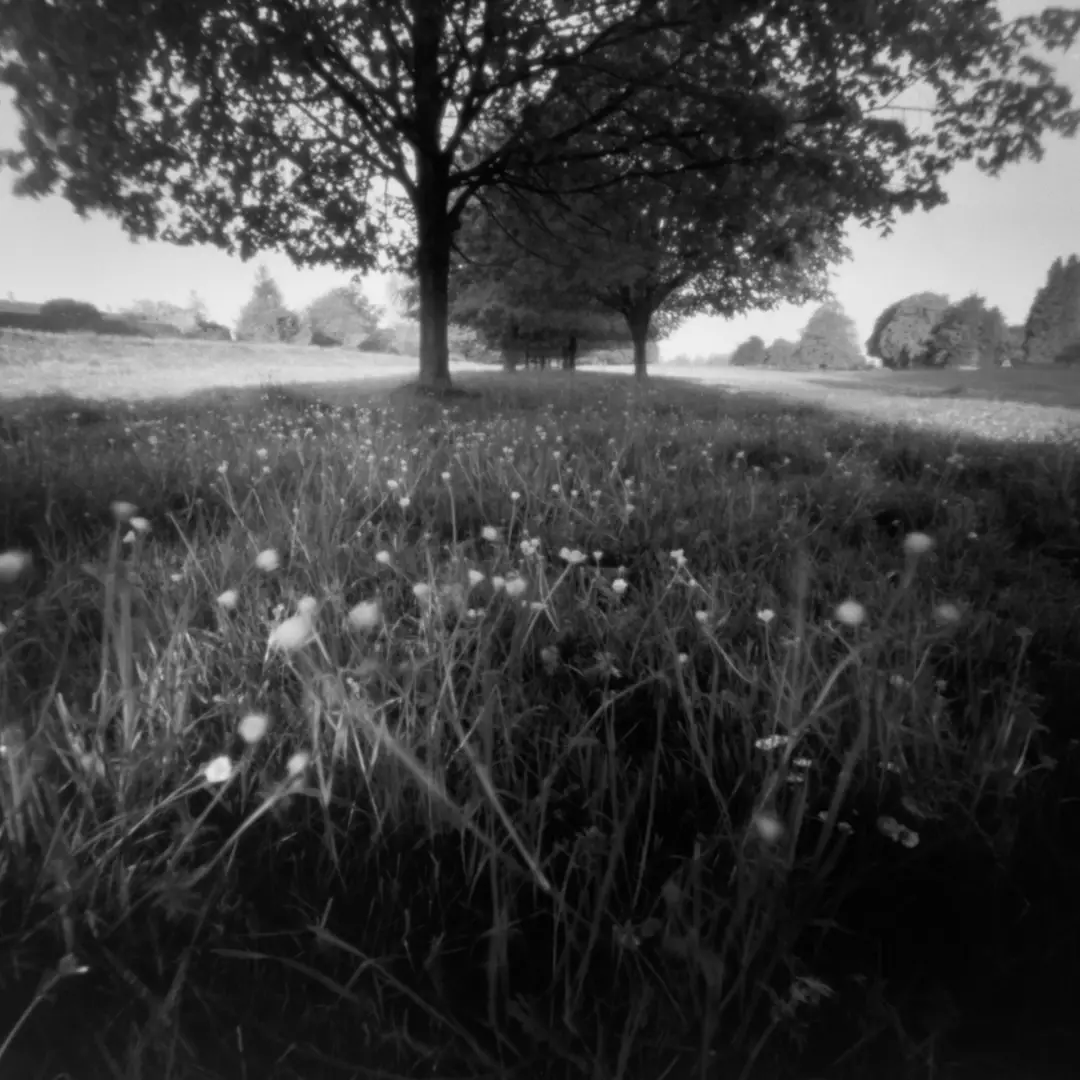
I passed this vantage point on a number of occasions when I was walking on Minchinhampton Common (Gloucestershire). My main interests were the row of trees initially. However, on a spring day, when I turned up there with the pinhole camera, the ground was covered with buttercups. So I put more emphasis on the buttercups and the trees become of secondary interest.
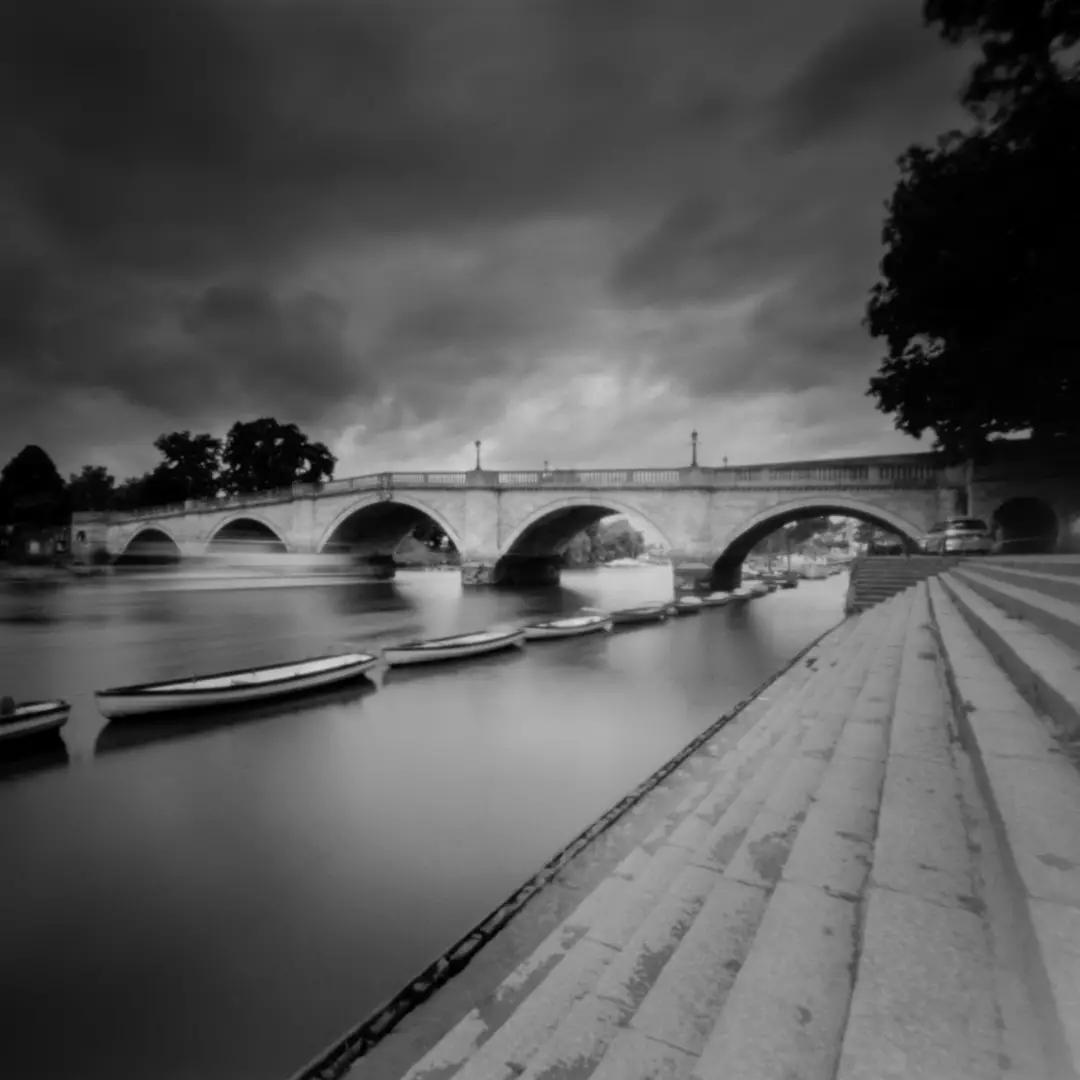
Richmond upon Thames is one of the favourite towns I enjoy wondering around with a camera. I made variations of this scene with digital as well as film cameras in the past. On that day it was the pinhole camera’s turn and luck was on my side. For me the passing pleasure boat was blurred perfectly. The 2 seconds exposure was just enough.
Share this post:
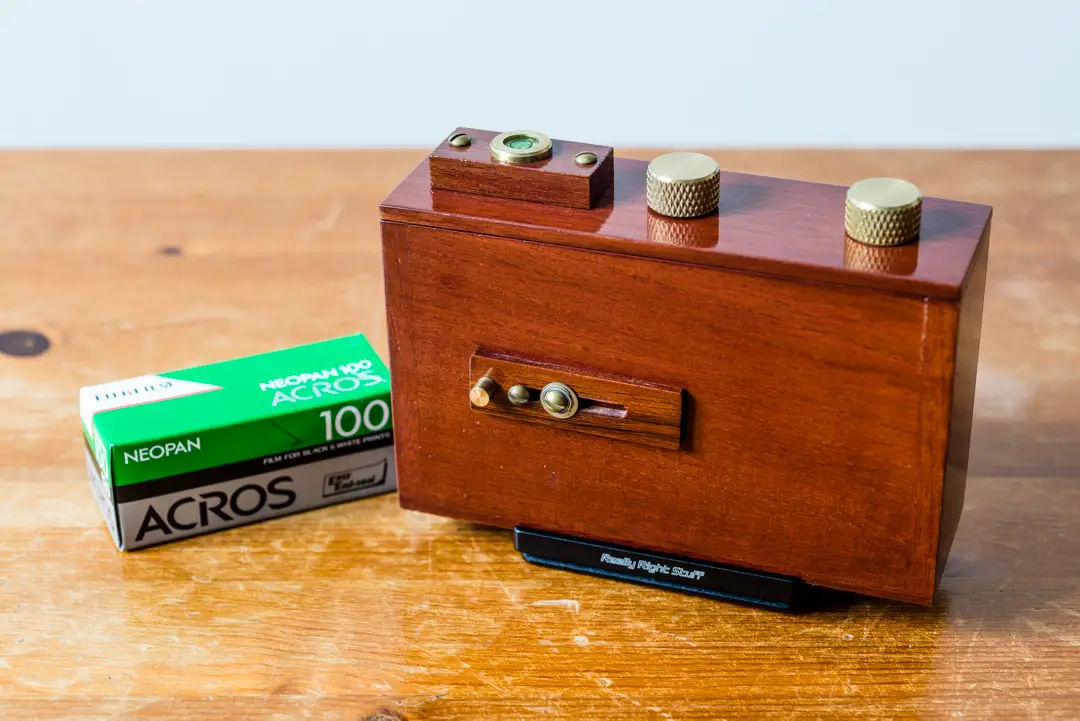








Comments
Bill Brown on 5 Frames with a Zero Image 2000 and Fuji Acros 100 – By Iksung Nah
Comment posted: 10/04/2022
Comment posted: 10/04/2022
Kurt Ingham on 5 Frames with a Zero Image 2000 and Fuji Acros 100 – By Iksung Nah
Comment posted: 10/04/2022
Comment posted: 10/04/2022
Arthur Gottschalk on 5 Frames with a Zero Image 2000 and Fuji Acros 100 – By Iksung Nah
Comment posted: 10/04/2022
Comment posted: 10/04/2022
Louis A. Sousa on 5 Frames with a Zero Image 2000 and Fuji Acros 100 – By Iksung Nah
Comment posted: 10/04/2022
Comment posted: 10/04/2022
Bob Janes on 5 Frames with a Zero Image 2000 and Fuji Acros 100 – By Iksung Nah
Comment posted: 12/04/2022
Comment posted: 12/04/2022
Graham Orbell on 5 Frames with a Zero Image 2000 and Fuji Acros 100 – By Iksung Nah
Comment posted: 19/04/2022
Comment posted: 19/04/2022
Lee on 5 Frames with a Zero Image 2000 and Fuji Acros 100 – By Iksung Nah
Comment posted: 19/04/2022
https://imgur.com/LvhEn3R
https://imgur.com/WhraL5C
https://imgur.com/RjBDcxp
Comment posted: 19/04/2022